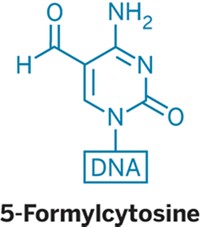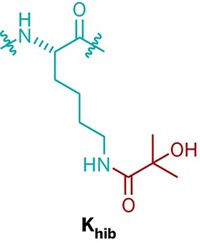Advertisement
Grab your lab coat. Let's get started
Welcome!
Welcome!
Create an account below to get 6 C&EN articles per month, receive newsletters and more - all free.
It seems this is your first time logging in online. Please enter the following information to continue.
As an ACS member you automatically get access to this site. All we need is few more details to create your reading experience.
Not you? Sign in with a different account.
Not you? Sign in with a different account.
ERROR 1
ERROR 1
ERROR 2
ERROR 2
ERROR 2
ERROR 2
ERROR 2
Password and Confirm password must match.
If you have an ACS member number, please enter it here so we can link this account to your membership. (optional)
ERROR 2
ACS values your privacy. By submitting your information, you are gaining access to C&EN and subscribing to our weekly newsletter. We use the information you provide to make your reading experience better, and we will never sell your data to third party members.
Biological Chemistry
Modified DNA Base 5-Formylcytosine Has A Specific Biological Role
Epigenetics: The decorated cytosine isn’t just an intermediate in the body, study shows
by Sarah Everts
June 22, 2015
The DNA base cytosine has a lot of different outfits in its closet. Most famously, the base can slip on a methyl group at its fifth carbon, a change that lends cytosine the ability to silence genes. Since 2009, cytosine has also been seen wearing 5-hydroxymethyl-, 5-carboxyl-, and 5-formyl- groups.
These discoveries have led to debate about whether cytosine’s decorations are purposeful epigenetic modifications or whether they are simply intermediates along a pathway responsible for removing methyls from cytosine. A new report by Shankar Balasubramanian at the University of Cambridge and his colleagues argues that 5-formylcytosine, along with 5-methylcytosine and 5-hydroxymethylcytosine, is a deliberate epigenetic marker (Nat. Chem. Biol. 2015, DOI: 10.1038/nchembio.1848).
There have been hints that 5-formylcytosine might be more than just an intermediate, comments Thomas Carell of Ludwig Maximilian University of Munich, who first reported the existence of 5-formylcytosine in 2011. But this new paper provides broad proof that the unusual base has a unique role in living cells, he says.
Balasubramanian and colleagues detected the modified base in a multitude of tissues in mice, including in embryonic stem cells and in various organs. More important, they found that 5-formylcytosine levels are stable in cells and that these levels are significantly different from levels of other decorated cytosines.
If 5-formylcytosine were just a short-lived intermediate in a demethylation pathway, it would be appear and disappear rapidly, and its presence in the mouse genome would not be stable. The fact that 5-formylcytosine levels are stable and different from other decorated cytosines suggests that the modified DNA base has a unique biological role.
According to Chuan He, a chemical biologist at the University of Chicago, this new work generates interesting questions, such as which proteins are involved in keeping 5-formylcytosine stable in cells?
And then there’s the elephant in the room: “We still don’t know the precise biological roles of these new marks,” Balasubramanian says. Although he adds that the decorated cytosines certainly play roles in development and in helping cells keep their identities once they’ve differentiated—so that heart cells don’t start growing hair, or spleen cells don’t begin growing toenails.





Join the conversation
Contact the reporter
Submit a Letter to the Editor for publication
Engage with us on Twitter